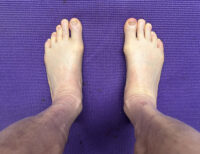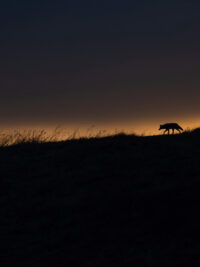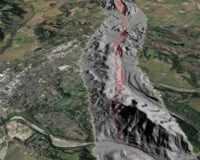
Residents along Lovall Valley road have been fighting a proposed winery that would be built on the valley floor. The winery would be located in Napa County, but would be accessed on Sonoma County roads.
Ryan lely/Sonoma Valley Sun
By Don Speich
Sonoma Valley Sun
Lovall Valley is one of the most isolated and bucolic places in either Sonoma or Napa counties, which it straddles. A long, winding, uphill and sometimes dusty road leads to it from downtown Sonoma; it is the only way in and out. The 40 or so residents who live there in mostly multi-million-dollar homes are the only people who regularly travel the two-mile stretch, which is good, they say, because any more traffic and it would be clogged.
Now one of the residents, David Grieve, wants to build a winery there — which, it is feared, would bring with it a high potential for road clogging, among other things.
His neighbors are not pleased.
They have mounted a campaign replete with a petition, roadside signs and a Web site aimed at persuading Napa County government officials – the proposed winery would be in Napa – to deny a use permit that would allow construction of the winery. The Napa Planning Commission will consider the permit request Sept. 19.
It’s not that the residents are opposed to the winery, per se, but to its proposed size.
“We want to be neighborly,” said Bart Jones, the Lovall Valley resident who is leading the opposition. “We are not saying no winery. We are saying please modify the size, keep it small.”
Jones said Grieve is proposing a facility that would produce 5,000 cases of wine a year. He said that a more acceptable number would be 1,000 cases, though, he concedes, he and others are somewhat flexible about the exact number.
Grieve bought the property five years ago as well as an adjacent parcel where he has his home, perched on a hill overlooking Sonoma as well as other Lovall Valley houses. His vineyard, which came with the property, hugs his home on three sides like a horseshoe. It is a postcard setting, a Sunset magazine cover waiting to be photographed.
Grieve, a native of the Midwest who went to college in Texas, says he wants to do nothing to spoil the ambiance. He also said he is close to a compromise with the opponents which will allow him to continue in his desire to bottle his Grieve Family Vineyard wine, which now is bottled elsewhere.
There will be, he says, no tour buses, no tasting room now or in the future, but such assurances have in weeks past done little to assuage concerns, where fiction, said Grieve, frequently has overcome fact.
Rumors, he said, have him putting in a bus turnaround on his property and pushing efforts to widen the Lovall Valley Road, all of which he dismisses as he chuckles and rolls his eyes.
Some of the fear no doubt is prompted by a previous owner who once proposed a winery that would produce 60,000 cases a year, an amount that surely would have led to the realization of Jones’ and others’ worst fears.
Nonetheless opponents, some of whom have small vineyards themselves, fear that Grieve’s considerably more modest proposal will increase not only car traffic but also trucks, that the noise, now virtually non-existent, will become an unwelcome way of life, and that there will be “light pollution,” by which they meant the inability to see the Big Dipper at night as now is the case.
Grieve said he had a traffic study done that shows traffic would not increase anymore than it would with a new six-bedroom home. He showed that to neighbors, hoping they would be reassured.
Says the Web site:
“Although all of us would prefer to do exactly as we like on our own land, we have to remember that development of any kind will impact the surrounding neighborhood and the environment both now and in the future.
“Development will increase traffic, the need for parking, water use, noise…in our valley. That is why neighbors are opposed to this project.”
They also fear that in the future Grieve might open up a tasting room, which would add to traffic problems. That, however, would require approval of the Napa Planning Commission as would anything else – increasing the size, for example – that varies from that included in the original use permit.
The Web site ProtectLovallValley.org includes a series of FAQs outlining the issue and answering questions about the proposal and what it means.
Citing recent history, the site states:
“Two years ago, the owner began the process to apply to build a winery on this property in the center of Lovall Valley. There was widespread neighbor opposition, and the plan was never submitted to Napa County.
“Recently, the owner applied to the county (Napa) to build a scaled-down version of the same winery idea and once again neighbors are opposing the proposed development.
“Even though the proposal describes a scaled-downed project, it is believed that the quality of life and safety on Lovall Valley Road will still be negatively impacted.”
Grieve said that those concerned about Lovall Valley fall into four categories: those who want no winery, those who are okay with it as long as it remains small, those who don’t care and those who believe people as a rule should be able to do with their property as they please.
Jones and Grieve both say they have worked hard to keep the situation civilized, even cordial.
It appears that may lead to something that most will, if not embrace, at least accept.




